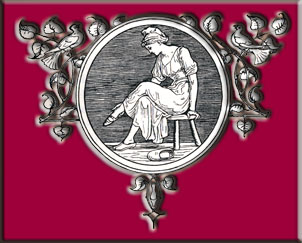

|
There once was a rich man whose wife lay sick, and when
–Jacob and Wilhelm Grimm
|
|
The Grimm brothers did not invent this version of Cinderella, as they did not write
In this version of Cinderella, called “Aschenputtel,” which is the German name for
“Why should the stupid goose be allowed to sit in the parlor withThey took her good clothes and dressed her in a gray smock, and made her wear wooden shoes. She had to work from before dawn till night, carrying the water to the house, making the fire in the hearth, cooking, and doing the wash. They also took her bed away, and made her sleep in the ashes beside the hearth, so that she always looked dirty. This is why they called her Cinderella.
|
|
One day the father announces he is going to the fair, and as in Basile’s tale, asks
“Father,” she said, “just break off the first twig that brushes
Her father does as she asks, and Cinderella plants the twig on her mother's grave.
Every time Cinderella would go to the tree and weep, a little white bird would come
|
|
One day the king decides to throw a three day festival and invites all the beautiful
When she asked her stepmother, the stepmother laughed in her face and told her
“I’ve emptied a bowl full of lentils into the ashes. If you can pick
Cinderella went to the back door and cried out: “Oh, you tame pigeons, you
The birds came, and within an hour the deed was done. When Cinderella showed
|
|
Happy, because she believes she is going to go to the ball, Cinderella takes the two
“Shake and wobble, little tree!The bird in the tree throws down a dress of gold and silver and silk slippers embroidered in silver. At the ball her stepmother and stepsisters do not recognize her. The prince, enchanted with her, dances with Cinderella the entire time she is there, and refuses to let anyone else be her partner. When Cinderella wants to leave, she has to escape the prince, who wants to escort her and know whose daughter she is. She hides in her father's dovecote, and the prince waits there for her father to come. The prince tells the father that a beautiful maiden is hiding inside, and the father wonders if it is his Cinderella. The father chops down the dovecote, but no one is inside. Cinderella had escaped out the back and returned the dress to the bird in the tree.
The next day is the same, except the dress thrown down is even more splendid
The third day of the feast Cinderella’s dress is even more magnificent, and the
“No one else shall be my wife but the maiden whose foot fits this |
|
The first stepsister takes the shoe to her room to try it on, but her big toe will
The daughter does as she is told and the shoe fits. The prince takes her with him
The prince asks if there are any other daughters, and the father replies that
The prince takes Cinderella on his horse, and as they ride by her mother’s grave,
“Looky, look, look
They then land on Cinderella’s shoulder and stay there. On the day of the wedding
Thus they were punished with blindness for the rest of their |
|
...continue on... and be enlightened to what hidden meanings lay within.
|
|
In the beginning of this tale Cinderella loses her mother. This original mother, like
Aschenputtel focuses more on sibling rivalry than “Cat Cinderella,” although there
As soon as Cinderella has stepsisters, her life changes for the worst, and children
Children who are read this Cinderella identify with her, and think “That’s just like
The stepsisters having better clothes, and not having to do all sorts of chores and
|
|
Let me remind you that the “good mother” theme is still hidden within this story,
The idea that people who die can be an ongoing source of comfort
The Grimm’s Cinderella gives many “concrete images” for children to help shed light
|
|
Remember back to Basile’s story? There are many creatures that will
|
|
The first two nights, where Cinderella escapes the prince, and hides in her father’s
The mutilation of the stepsisters feet shows just how much a “bad mother” the
But in the end everything turns out all right, which serves greatly for the child's
|

| Click to go indepth into Basile's "Cat Cinderella." |

| Click to go back to "Cinderwho?" |

| Click to go indepth into Perrault's "Cinderella." |
